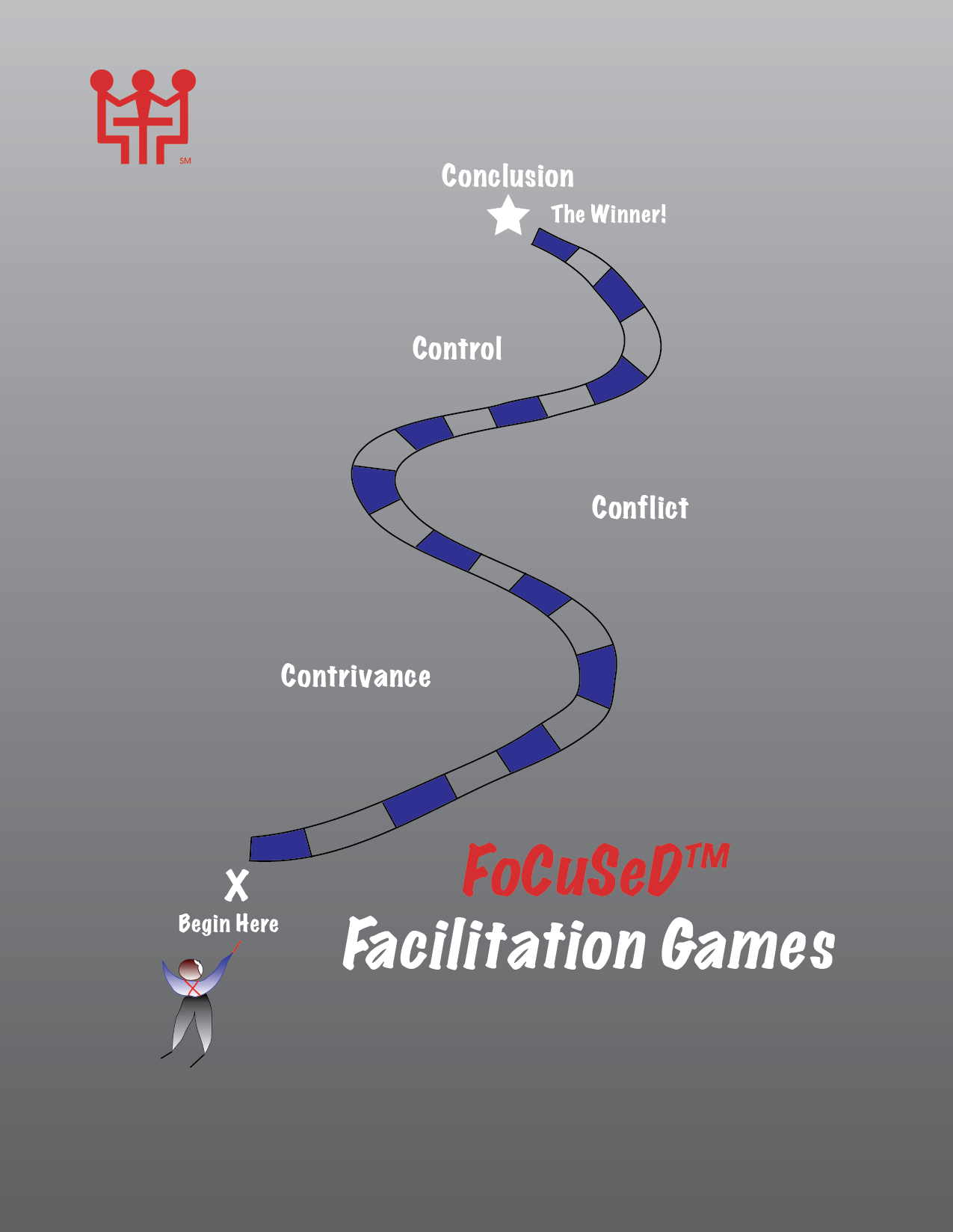May 2011 - The FoCuSeD™ Facilitator eNewsletter

FoCuSeD™ Facilitation Games, Exercises, and Tools | Gary Rush Facilitation
I attended a class by Sivasailam “Thiagi” Thiagarajan in March, to learn how to create training games. I am now a Thiagi Certified Trainer. This provided me with a plethora of ideas that will enhance and be incorporated into our FoCuSeD™ training through effective learning activities. The FoCuSeD™ Advanced Class, this fall, brings this approach to those experienced Facilitators who want to learn how to design meaningful facilitation games, exercises, and tools for a variety of situations.
Participant Engagement Tools (PETs)
How often have you needed to use a game, exercise, or tool (I call them Participant Engagement Tools – PET) in a workshop to help Participants work together, be more creative, or get to know each other better? How often have you been told that your Participants wouldn’t participate in anything “warm and fuzzy”? Well, skipping the PET won’t help your Participants because you know it’s needed. Here are some ideas to help.
- Don’t call it a game, exercise, or tool. Those words carry connotations that trouble some people. I either don’t name it – “The next step that we will do is…”, or I use Participant Engagement Tool (PET). It sounds impressive and helps avoid some of the baggage associated with the words, “game”, “exercise”, or “tool”.
- Ensure that the PET is well designed. Well-designed PETs are first and foremost, relevant. If it doesn’t add value, then it shouldn’t be used. Well-designed PETs also follow the 4C’s:
- Contrivance – all PETs are artificial. They should also be playful and inefficient. They need to reflect reality, but not be reality.
- Conflict – all PETs need competition or goals. The Participants need to accomplish something. What they accomplish is often applied in a new context.
- Control – all PETs need rules, turns, moves, and impact. If needed, they need to have scoring well defined. Instructions must be absolutely clear.
- Conclusion – all PETs need to end – not just fade away but have a specific defined ending.
- Lastly, all PETs must include a debriefing – often lasting longer than the game, exercise, or tool itself.
Debriefing
Debriefing a PET is the most important part and should never be forgotten, ignored, or abbreviated. Use the following six questions (from Interactive Strategies for Improving Performance, by Sivasailam Thiagarajan, Tracy Tagliati, Matthew Richter, and Raja Thaigarajan):
- How do you feel? – This open, broad question brings out the emotions of the Participants. Most decisions are made on emotion.
- What happened? – This question helps Participants recall what they did and helps to facilitate analysis. Recall helps learning to sink in.
- What did you learn? – This question helps analyze what happened and extract what the Participants learned and will apply in the remainder of the workshop. When Participants describe what they learned, it sticks with them. How does this relate? – This question then drives home the relevance of the PET to the work at hand. Participants need to understand and see how the PET relates.
- What if…? – This question helps the Participants apply what they learned in a new context. Learning has more impact when it applies in a number of ways.
- What next? – This question becomes a transition to the next step in the workshop. Participants need to see the immediate application of what they learned.
Summary
PETs are important in facilitation. Almost every workshop that I’ve facilitated required some form of PET. When they are properly designed, properly introduced, and fully debriefed, PETs add a great deal of value to both the workshop and to the Participants. ![]()

